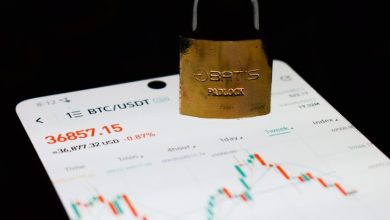The Future of Crypto Exchanges: Decentralized vs. Centralized Models

- Understanding the evolution of crypto exchanges
- Advantages and disadvantages of centralized exchanges
- The rise of decentralized exchanges in the crypto space
- Security concerns with centralized exchanges
- Comparing liquidity in centralized and decentralized exchanges
- Regulatory challenges for both centralized and decentralized exchanges
Understanding the evolution of crypto exchanges
The evolution of crypto exchanges has been a fascinating journey, marked by significant milestones and technological advancements. In the early days of cryptocurrency trading, centralized exchanges dominated the landscape, offering users a convenient way to buy and sell digital assets. However, as the industry matured, decentralized exchanges began to gain traction, offering a more secure and transparent alternative to their centralized counterparts.
Centralized exchanges, which are operated by a single entity, have long been the go-to choice for many traders due to their user-friendly interfaces and high liquidity. These exchanges act as intermediaries between buyers and sellers, matching orders and facilitating transactions. While centralized exchanges offer convenience, they also come with drawbacks, such as a single point of failure and the risk of hacking.
Decentralized exchanges, on the other hand, operate on a peer-to-peer network, allowing users to trade directly with one another without the need for a central authority. These exchanges offer increased security and privacy, as users retain control of their funds throughout the trading process. Additionally, decentralized exchanges are often more resistant to censorship and regulatory intervention, making them an attractive option for those who value financial sovereignty.
As the crypto industry continues to evolve, both centralized and decentralized exchanges will likely play a role in shaping the future of digital asset trading. While centralized exchanges offer convenience and liquidity, decentralized exchanges provide enhanced security and privacy. Ultimately, the choice between centralized and decentralized exchanges will depend on the individual preferences and priorities of each trader.
Advantages and disadvantages of centralized exchanges
One advantage of centralized exchanges is the high liquidity they offer. This means that traders can easily buy and sell cryptocurrencies without having to wait for a match. Additionally, centralized exchanges often have lower fees compared to decentralized exchanges, making them more cost-effective for frequent traders. These platforms also typically have more advanced trading features and tools, which can be beneficial for experienced traders looking to execute complex strategies.
On the other hand, centralized exchanges are more vulnerable to hacking and security breaches. Since they store users’ funds in a central location, they are a prime target for cyber attacks. This can put traders’ assets at risk and lead to significant financial losses. Furthermore, centralized exchanges are subject to regulatory oversight, which can limit the types of cryptocurrencies that can be traded on the platform. This lack of decentralization goes against the core principles of blockchain technology, which aims to eliminate the need for intermediaries.
In summary, while centralized exchanges offer high liquidity, low fees, and advanced trading features, they also come with risks such as security vulnerabilities and regulatory restrictions. Traders should carefully weigh these advantages and disadvantages before choosing a platform to trade cryptocurrencies.
The rise of decentralized exchanges in the crypto space
The rise of decentralized exchanges (DEX) in the cryptocurrency space has been gaining momentum in recent years. Unlike centralized exchanges, which are operated by a single entity, DEX operate on a distributed ledger technology such as blockchain, allowing users to trade directly with one another without the need for an intermediary.
Decentralized exchanges offer several advantages over their centralized counterparts. One of the key benefits is the enhanced security and privacy that DEX provide. Since users retain control of their funds at all times, there is a lower risk of hacks or theft. Additionally, DEX do not require users to undergo a verification process, preserving their anonymity.
Another advantage of decentralized exchanges is the increased liquidity and trading volume they offer. By connecting buyers and sellers from around the world, DEX can facilitate trades more efficiently and at a lower cost. This can result in better prices for users and a more dynamic trading experience.
Furthermore, decentralized exchanges are often seen as more transparent and resilient than centralized exchanges. Since transactions are recorded on a public blockchain, users can easily verify the integrity of the trading platform. Additionally, DEX are less vulnerable to regulatory crackdowns or server outages, as they operate on a decentralized network.
Security concerns with centralized exchanges
One of the main concerns associated with centralized exchanges is the issue of security. Centralized exchanges store all user funds and data in a single location, making them a prime target for hackers. This centralized storage makes it easier for cybercriminals to launch attacks and potentially steal large amounts of cryptocurrency.
Furthermore, centralized exchanges are often operated by a single entity or company, which means that users are placing their trust in this one organization to secure their assets. If this entity is compromised in any way, whether through internal fraud or external hacking, users could stand to lose everything they have invested in the exchange.
In recent years, there have been several high-profile hacks on centralized exchanges, resulting in millions of dollars worth of cryptocurrency being stolen. This has led to a loss of trust in the centralized exchange model and has prompted many users to look for alternative options that offer greater security and control over their assets.
Decentralized exchanges, on the other hand, offer a solution to these security concerns. Because decentralized exchanges do not store user funds or data in a single location, they are much less susceptible to large-scale hacks. Instead, users retain control of their own assets through the use of smart contracts and blockchain technology, reducing the risk of theft or loss.
Overall, while centralized exchanges have dominated the cryptocurrency market thus far, their security vulnerabilities are becoming increasingly apparent. Decentralized exchanges offer a more secure alternative that puts control back in the hands of the users, making them an attractive option for those concerned about the safety of their assets.
Comparing liquidity in centralized and decentralized exchanges
One key aspect to consider when comparing liquidity between centralized and decentralized exchanges is the level of control and trust involved. Centralized exchanges typically have higher liquidity due to the large number of traders and volume of transactions taking place on a daily basis. This high liquidity can result in faster trading speeds and better price stability for traders.
On the other hand, decentralized exchanges rely on smart contracts to facilitate trading without the need for a trusted third party. While this provides a higher level of security and privacy for users, it can also lead to lower liquidity compared to centralized exchanges. This is because decentralized exchanges are still gaining traction and may not have as many users or trading pairs available.
In terms of flexibility, centralized exchanges often offer a wider range of trading options and services due to their centralized nature. They can easily add new trading pairs, integrate new features, and provide additional services to their users. This can attract more traders and increase liquidity on the platform.
Decentralized exchanges, however, are limited by the capabilities of the underlying blockchain technology. While they offer increased security and privacy, they may not be able to match the level of flexibility and variety of services provided by centralized exchanges. This can impact liquidity as traders may prefer to use platforms that offer more options and features.
Overall, the comparison of liquidity between centralized and decentralized exchanges highlights the trade-offs between control, security, and flexibility. Traders must weigh these factors when choosing a platform to trade on, taking into consideration their individual preferences and priorities.
Regulatory challenges for both centralized and decentralized exchanges
Regulatory challenges pose significant hurdles for both centralized and decentralized exchanges in the cryptocurrency market. Centralized exchanges, which act as intermediaries between buyers and sellers, are subject to strict regulations imposed by governing bodies. These regulations often require centralized exchanges to comply with know-your-customer (KYC) and anti-money laundering (AML) guidelines to prevent illicit activities such as money laundering and terrorist financing. Failure to adhere to these regulations can result in hefty fines and even shutdowns for centralized exchanges.
On the other hand, decentralized exchanges operate without a central authority, making it difficult for regulators to enforce compliance with existing financial regulations. This lack of oversight raises concerns about the potential for decentralized exchanges to be used for illegal activities, such as tax evasion and fraud. Additionally, the anonymity offered by decentralized exchanges can attract malicious actors looking to exploit vulnerabilities in the system.
Despite these challenges, both centralized and decentralized exchanges are working to find ways to navigate the complex regulatory landscape. Centralized exchanges are investing in robust compliance measures to meet regulatory requirements, while decentralized exchanges are exploring solutions such as decentralized identity verification to enhance security and transparency.



